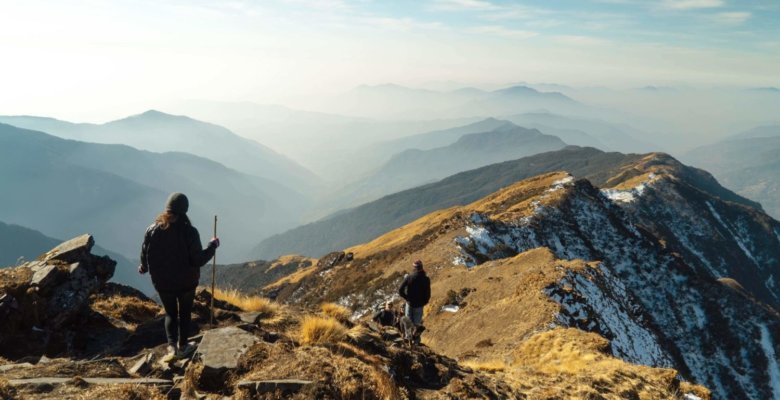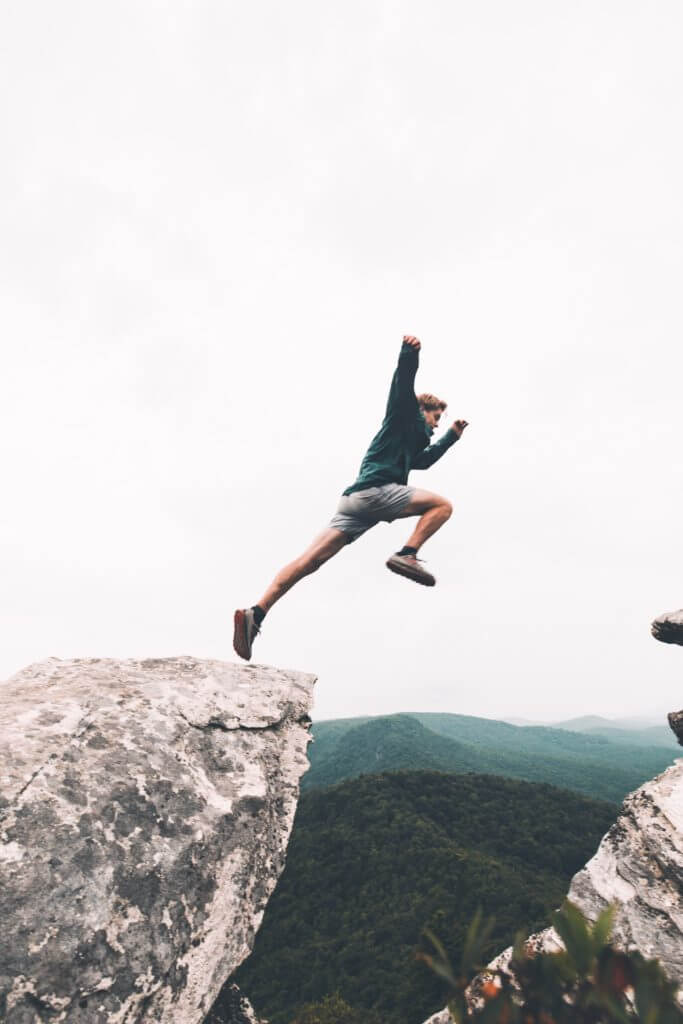
Training for Hiking
Training for hiking doesn’t have to be complicated. Include these five essentials in your training and it will be incredibly effective at reducing your risk of pain or injury, improving your hiking fitness and allowing you to fully enjoy your adventures!
How To Train For Hiking
The best way of training for hiking is hiking. There is no doubt about that. But if you have a significant hike in your sights, you always find your self-huffing and puffing on the trail or you are worried about pain or injury while hiking, doing a little extra training in your week can be incredibly beneficial.
But for most hikers, the idea of doing specific training for hiking is a bit foreign. So they end up just jumping into generic gym classes or walking on the treadmill… and while there is nothing inherently wrong with this, you can be doing a lot better!
So, if are looking to step up your hiking game a bit, prepare yourself for a challenging hike or even protect yourself from injury or pain, you need to read on!
5 Tips To Get You Fit, Strong And Resilient For The Trail!
#1 Take Advantage Of Strength Training
Strength training is one of the single most underutilised training methods in the hiker’s arsenal… but it can be so incredibly beneficial!
It can:
- Help prevent hiking related pain and injuries (knee pain on downhills anybody?)
- Improve movement efficiency (i.e. every step uses less energy)
- Increase walking speed (so you never have to worry about holding up the pack again!)
- Enhance balance and stability on the trail
But many hikers are very wary of strength training. And when they think of it, they imagine people slaving away in a gym, surrounded by heavy weights and bulked up blokes… but it doesn’t have to be like this!
Strength training for hiking can be done absolutely anywhere including outdoors or even in your living room!
Great strength exercises for hikers include:
- Step downs
- Single leg deadlifts
- Glute bridges
- Mini band walks
(You can do a quick YouTube search to learn how to do these)
One final thing here is that the key to effective strength training is structure and progression.
Meaning you want to be following a planned program (and not just a few random exercises) and you want to progressively and gradually increase the challenge of the workouts. By following these two principles, you will massively increase the effectiveness of this training.
If you’re not 100% sure about all of this, it is highly recommended that you speak to a professional. They can get everything sorted for you, so you can be sure you are doing exactly the right things!
#2 Plan Your Hiking!
Most hikers are pretty happy getting out on the trail to improve their fitness. However, if you are planning for a significant hike in the future, or simply want to minimise any risk of injury or pain for your hiking, a little bit of planning and a little bit of structure will go a long way!
As mentioned above, one of the most important principles in any type of training for hiking is progression. In regards to your hiking, this means you want to slowly increase both the distance and the difficulty of your hikes over time. This is essential in order to continually give the body stimulus it needs to adapt and grow while minimising the risk of pain or injury (which often comes from doing too much, too soon).
“Discover hiking’s full range of benefits”
So, how can you put this into action?
Well, the easiest way to figure this out is to get out the most technologically advanced training tool there is…. your calendar!
Schedule in where your upcoming hike will be and then schedule in all the dates where you think you can go hiking between now and then (this doesn’t have to be exact but having a rough plan is important!) Then simply pencil in a different hike on each available date, ensuring there is a slow and gradual build in distance and difficulty.
#3 Train For Elevation
For the majority of hikers, the elevation is the toughest part of the trail. Those pesky hills can get your legs burning, get you huffing and puffing and make things a serious struggle!
But instead of just accepting this as fate, by doing some specific training for hiking through the week, you can make this significantly easier and more enjoyable!
So, how do you do it?
The answer to that is interval training. But no, I am not talking about going down to your local gym, jumping into a generic ‘HIIT’ class, doing a million burpees and running yourself into the ground…
And I am not talking about jumping on a bike and sprinting like your life depends on it…
These things are not very relevant to hiking.
Instead, I am talking about hiking specific interval training.
Which involves finding a super steep hill or set of stairs. Hiking up to the top. Returning to the bottom. And repeating!
This stuff can be pretty tough… but it is incredibly effective at improving hiking fitness and preparing your body for the rigours of elevation!
“How to Train for Hiking (Great Resource!)”
#4 Look After Your Body
 One common mistake the majority of hikers make is simply not looking after their body!
One common mistake the majority of hikers make is simply not looking after their body!
Hiking and training take its toll. Many hikers I talk to are constantly battling with little niggles and pain. Things like plantar fasciitis, shin splints and hikers knee are all incredibly common. In fact, probably about 75% of the hikers I speak to deal with something like this day to day!
But instead of ignoring these issues and hoping they won’t affect you… I urge you to be proactive.
If you look after your body, you can greatly reduce the chance of these things happening in the first place!
I recommend all my hikers follow a regular ‘self-care’ routine.
This involves:
- Regularly ‘foam rolling’ stiff/tight muscles
- Performing dedicated stretching sessions
- Gentle ‘active recovery’ sessions (i.e. yoga, pool walking, cycling)
Investing a little bit of time into these things can go an incredibly long way to keeping you pain-free, long term!
#5 Test Your Gear
You have probably heard this many times before. But it bears repeating. Absolutely anything you are planning on using while you are hiking, you should be testing in your training!
Now the standard recommendation here is your hiking boots. If you are buying a new pair of boots for an upcoming hike, you better make sure you break them in early! But beyond this, there are plenty of other things to consider…
Planning on using a fancy new hydration system? Test it out in your training!
Using trekking poles for the first time? Test them out in your training!
Planning on eating some type of sports bar or energy gel on your hike? Test them out in your training!
This stuff should be common sense. But so many hikers forget about this. So please, make it happen!

Leave a Reply